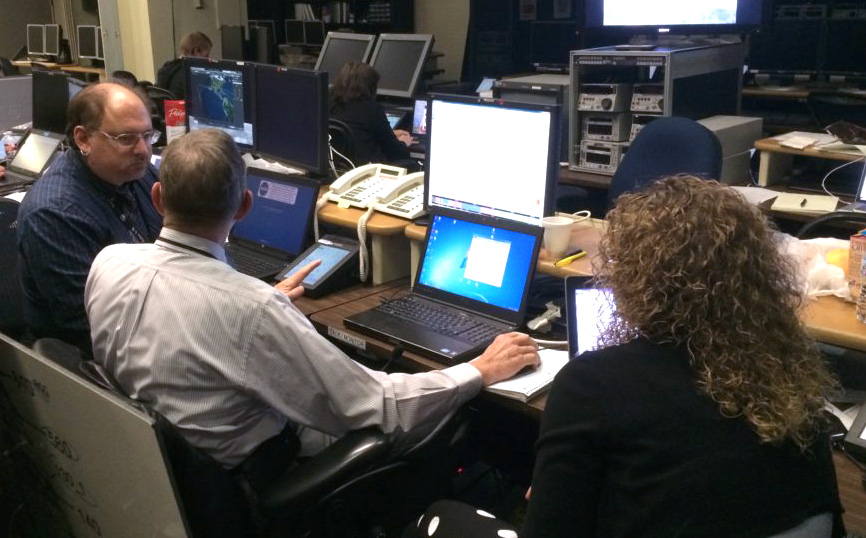SCIFLI has been involved with the Orion, NASA’s flagship spacecraft, since 2014. The team has helped test Orion’s heat shield, parachutes, and abort system. This November, SCIFLI will also be documenting the launch of Artemis I, NASA’s next step in establishing a foothold on the Moon.
Image credit: NASA/Tony Gray and Kevin O’Connell, AA-2 launch.
AA-2
Space flight comes with inherent risk. It is essential to plan for worst-case scenarios, especially for crewed missions. Ascent Abort 2 (AA-2) was a test of the Orion capsule’s Launch Abort System (LAS). As a key part of the Artemis mission to the moon, the Orion’s LAS would be instrumental in protecting the lives of astronauts in the event of a launch malfunction. The system includes a separate capsule, called the Launch Abort Vehicle (LAV) attached to the primary rocket. When an abort is activated, the LAV must separate and avoid collision with the rocket before parachuting down to safety on Earth. Launched on July 2, 2019, from Cape Canaveral, the goal of AA-2 was to demonstrate the capability of the abort system to propel the capsule safely away from the rocket.
The short 3 minute 13 second event had three primary stages: liftoff, separation, and splashdown. SCIFLI planned to capture high-resolution visual and infrared imagery of the vehicle in each phase. Because of the incredible force required to launch and separate the abort system, any contact between the LAS and LAV could imperil the potential occupants of Orion. SCIFLI’s primary goal was to capture any such contact. Images were to be taken by the WB-57 aircraft and the MARS Scientific ground crew.
“It was a very smooth liftoff… By all first accounts, it was magnificent.”
Mark Kirasich, Orion Program Manager
The rocket was “hot off the pad,” launching fast and with unexpected force, but fortunately this did not endanger the abort. While this did cause the flight to deviate from its expected path, emitting plumes that blocked ground observation, SCIFLI was able to capture the successful separation of the LAS and LAV, including 8 videos and over 2000 images from the air. This helped to validate the success of the abort system and ensure the safety of future Artemis astronauts. The mission as a whole was hailed as a significant success for Artemis. “It was a very smooth liftoff,” said Orion Program Manager Mark Kirasich, “By all first accounts, it was magnificent.”
EFT-1
The NASA EFT-1 (Exploration Flight Test 1) Mission was the first planned unmanned test flight of the Orion Multi-Purpose Crew Vehicle. It launched on December 5, 2014, with Orion atop a Delta IV Heavy Rocket from Cape Canaveral. After traveling to an altitude of 3600 miles—fifteen times higher than the International Space Station—it orbited the Earth twice, before reentering the atmosphere and splashing down in the Pacific Ocean.

With the help of Cast Glance and the Navy P-3 Aircraft, SCIFLI was able to record visual imagery of the parachute deployment. The team also gathered infrared imagery of Orion’s heat shield and compared these data to readings from thermocouples positioned on the capsule. Ensuring the safety of the heat shield was of particular importance because objects returning to Earth from a lunar orbit enter the atmosphere at higher speeds and with higher temperatures than objects from a terrestrial orbit. The verification of the heat shield’s efficacy helped ensure that Orion would be able to return from the Moon in future missions, such as Artemis II.

